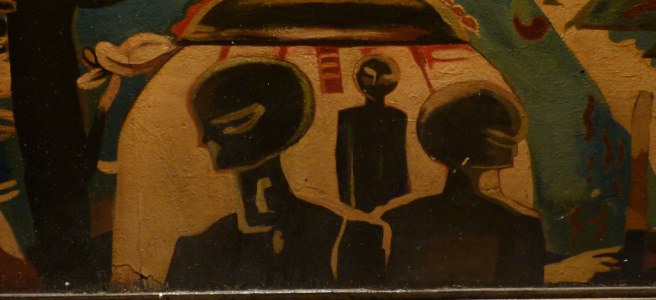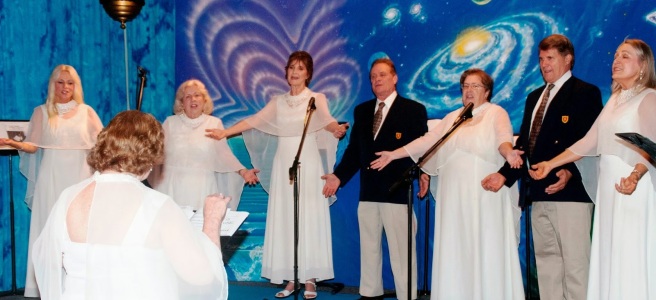The fourth anniversary of this blog came and went last 22 February. I can, I think, be forgiven for not marking the occasion: here, in Montreal, the pandemic dragged on; the nation’s capital was occupied by a Canadian version of insurrectionists (so Canadian, in fact, they couldn’t recognize themselves as insurrectionists); and Russia was gearing up for that invasion of Ukraine it launched before the end of the month.
What prompts today’s clarifications, though, is the surprising and not unwelcome interest in my recent commentaries on some of the plenary sessions delivered at the recent Archives of the Impossible conference at Rice University in Houston, Texas: Jeffrey Kripal’s opening remarks and Jacques Vallée’s keynote address (here) and those of Whitley Strieber and Diana Pasulka.
On the one hand, sckepticks (my coinage) of the UFO phenomenon take quickly and enthusiastically to those remarks of mine that appear to harmonize with their dismissal of the whole matter: my notice of Vallée’s and Harris’ Trinity: The Best Kept Secret or my criticisms of aspects of the talks, above, usually their philological and scholarly lapses. Believers in the reality of the phenomenon, on the other hand, see me as a skeptic, too. Both, I claim, are mistaken, as would any believer who therefore takes it I side with them. Indeed, I would be especially disappointed if Kripal, Vallée, Strieber, or Pasulka reading my remarks (not for a moment that I imagine they have or do) took it I was crankily trolling them. And I am the first to admit that such confusion is a fault both the way my own interests wander and the relative subtlety of the more general stance I take here.
I started this blog in 2018 as a way of keeping myself honest. Since 1994 I’d been at work on an impossibly unwieldy project, an epic-length, poetic treatment of the UFO as, in Jung’s words, “a modern myth of things seen in the skies.” (Interested parties need only click on the ‘poems’ category to see some of the tentative results of this project). I had seen in a flash that year how the countless stories of UFOs and their pilots and their interactions with human beings composed a repressed critique of the technoscientific culture of the so-called advanced societies of the earth, a culture that at one and the same time served to revolutionize (scientifically and industrially…) human societies and has brought them to the brink of dissolution if not extinction. Here was a ready-made, generally familiar body of stories (contrast the recognizability of ‘UFO’ with “Prometheus’…) ready for the artist’s use.
In 1999 (I think it was) I presented this insight in the discourse of the sociology of religion at that year’s Society for the Scientific Study of Religion conference in Montreal in the form of a paper co-authored with a friend, Dr Susan Palmer, “Presumed Immanent: The Raëlians, UFO Religions, and the Postmodern Condition.” Jaws dropped, the editor of Nova Religio buttonholed me immediately after the session, and the paper has since appeared, first, in that academic journal, then, in university syllabi, textbooks, and most recently The Cambridge Guide to New Religious Movements. Though unposed as such, the question that motivated that paper’s argument was that of the appeal of Raël’s message. The answer is that Raël’s “religion of science” is in its essential presuppositions perfectly harmonious with the ideology of technoscience that governs the world’s advanced societies and inspires the imagination of technologically-advanced, extraterrestrial societies among “UFO people” and SETI scientists, alike.
The tendency of this blog has been to articulate that original insight in an ever more varied and hopefully more profound and thorough-going a manner. The vector of thought here has been critique (as opposed to criticism, fault-finding, mockery, or dismissal, the mode of many UFO skeptics…). ‘Critique’ hearkens back to the critical philosophy of Immanuel Kant that sought not to answer the metaphysical questions of his day (Does the world have a beginning or is it eternal? Does the soul survive death?, etc.) but to query how it is possible we have the knowledge of nature, morals, and beauty we do. After Kant, especially with the advent and development of historical materialism down to this day, ‘critique’ has come to sometimes denote that analysis of the presuppositions and implications of some position or body of belief or knowledge, in a word, a critique of ideology, here, precisely, that one Jürgen Habermas posited as that of our modern European or Western society, technoscience.
So, for example, my unrelenting critique of the various pronouncements of Avi Loeb should not be taken as claiming these are in any way false, but as attempts to reveal what goes unthought and uninterrogated in these positions. Of course, imaginably, an argument might be made from these critiques about the tenability of his claims, but this is an avenue my thinking does not go down. In the same breath, however, as anyone who has taken the lessons of deconstruction (namely those of Jacques Derrida and Paul de Man) to heart will understand, maintaining an airtight opposition between strictly “negative” critique (that is, it does not posit any theses of its own about the facts of the world in opposition to the positions it scrutinizes) and the demand to take some position with regard to the truth of things is ultimately unsupportable. Still, one, in all intellectual honesty and self-surveillance, can try….
In a more general sense, the project here, aside from publicizing the essential poetic project, is to bracket the question of the being (nature or reality) of the phenomenon to better bring into view its meaning. In this regard, the general stance most often taken here is phenomenological, in the sense first given that expression by Edmund Husserl and those who went on to develop his method of “philosophy as a rigorous science”. The dispute over the reality and nature of the phenomenon has proven exhausting and fruitless since 1947, and it’s one I consistently eschew. However, the significance or meaning of the phenomenon is an infinitely rich field of research for the more sociologically-minded, an argument I have made with greater force and at greater length, here.
For all that, I do sometimes criticize, but let it be noted not in the spirit of mere negation or dismissal, but precisely because I take the criticized and the matter under consideration seriously. This ethic is especially so in the case of more scholarly discourses, like those, for example, of Jeffrey Kripal or Diana Pasulka. I don’t demand a cold-blooded, heavy, Nineteenth century Teutonic demeanor (as doubtless some readers here hear me assuming) but I do have certain standards of precision, exactitude, and scholarship I can’t bear to see unfulfilled. Because what’s at stake is a grasp of the character and destiny of techno-industrial society, it is arguable that any lapse in such standards is understandably, at least, irritating. And let’s remember that “irritability” (“Does it react if you poke it with a stick?”) is a sign of life.
So, however gratifying it is to be read and, after a fashion, appreciated, I beg readers to remember that if they think the posts here are engaging in the never-ending for-and-against concerning the reality or nature of UFOs or UAP, likely something subtler and, hopefully, more profound is at work.




